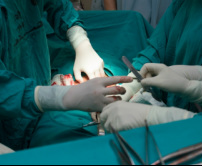
What's The Story?
What Can We Do?
Pre-op
- Minimise time to theatre
- Consider regional anaesthetic techniques to minimise pain and opioid use pre-operatively (I see a lot of fascia iliaca blocks done in A&E for these patients)
- Be aware of the high incidence of anaemia and hypovolaemia in these patients
- Aim for a neuraxial technique (controversial and an unanswered question but suggestion of improved morbidity if not mortality).
- Early rehabilitation and mobilisation (and thus an anaesthetic approach that facilitates this)
- Implementation of appropriate care bundles (analgesia, management of anaemia, thromboembolism prophylaxis)
- Avoidance of delirium
- Use of critical care facilities where appropriate.
Let's Wrap It Up
Well that is it from this little trilogy. Thank you for reading and I hope it was at least mildly useful. As with the previous posts I have put together some more links to some resources that you might find useful. Some more great posts currently in the pipeline and I hope to see you again soon.
Tom Heaton
NICE Guidance - The 2011 NICE clinical guidelines on hip fractures
National Hip Fracture Database - Homepage of the NHFD, a national audit project aiming to improve hip fracture care.
Medscape: Hip Fractures - The weighty medscape pages on hip fractures
 RSS Feed
RSS Feed
